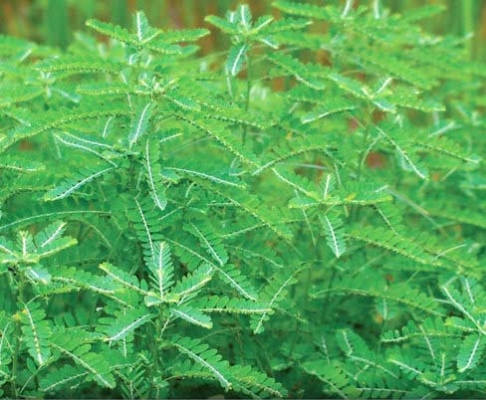General Information
Bhumi amalaki known as Phyllanthus which means” leaf and flower”. It is an annual herb with average height of 30-40cm. Flowers are whitish-green in color and are small elliptic-oblong shaped. It is rich in the source of vitamin C. Whole plant is used for preparing various products as well as medicines. Bhumi amalaki is used for treatment of jaundice, asthma, skin diseases, cough and also purifies blood. It is found throughout the world including southern china, Sothern India and Bahamas. In India it is grown in Chhattisgarh, Jharkhand, Bihar etc.




















